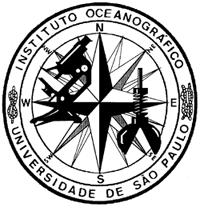An investigation on the temporal variation of the planktonic microbial community (bacteria, total picophytoplankton and nanoheterotrophs) was undertaken over 7 days period (from February 27 to March 4, 1988) in a coastal region of Ubatuba (23°8, 45°W). Samples were obtained at the thermocline twice daily (at high and low tides) during daylight time. Average density of nanoheterotrophs (Nh) was 2.3 x 10³ cells m-l, ranging from 0.9 to 3.5 x 10 cells mrl. Total picophytoplankton was represfnted mostly by chroococcoid cyanobacteria and varie2 from 1.0 tp 7.6 x 10(4) cells m-l. Bacterial numbers ranged from 1.0 to 2.7 x 10(6) cells m-l. The oscillation pattern displayed by the bacterial populations was out of phase in relation to Chl-a variation. The time interval between Chl-a peak and the bacterial one was approximately 24 hours. At the beginning of studied period, the interrelationship between nanoheterotrophs and bacteria-picophytoplankton was characterized bya coupled oscillation, suggesting a predator- prey Interaction. During the last three days (Marsh 2-4) the densities of three populations have fluctuated in phase. The influences of weather conditions, tIdal movements, and predation by microzooplankton and metazoans are discussed. Many factors can affect the relationships between nanoheterotrophs and bacterial-picophytoplankton, but the oscillation pattern observed in this report are not fortuitous and may indicate an intense predation activity of nanoheterotrophs on pico-organisms.
Bacteria; Cyanobacteria; Nanoheterotrophs; Cloroftla a; Predation; Temporal Variation; Abiotic Factors; Ubatuba; São Paulo; Brazil
